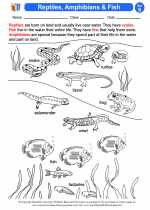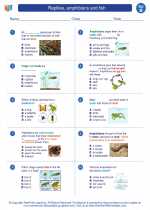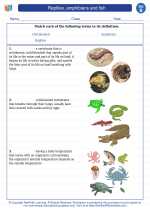Rotational Motion
Rotational motion refers to the movement of an object around an axis. This type of motion can be seen in objects such as wheels, gears, planets, and many other mechanisms. Understanding rotational motion involves concepts such as angular velocity, torque, and moment of inertia.
Key Concepts
- Angular Velocity: The rate of change of angular displacement with respect to time. It is measured in radians per second (rad/s).
- Torque: The measure of the force that can cause an object to rotate about an axis. It is calculated as the product of the force and the distance from the axis of rotation.
- Moment of Inertia: The resistance of an object to changes in its rotational motion. It depends on the mass and distribution of mass around the axis of rotation.
Study Guide
To understand rotational motion, it's important to grasp the following concepts:
- Understand the difference between linear and rotational motion. Provide examples of each.
- Describe how angular velocity is calculated and how it relates to linear velocity.
- Explain the concept of torque and how it influences rotational motion.
- Discuss the factors that affect the moment of inertia of an object.
- Compare and contrast rotational motion with translational motion.
By mastering these key concepts and completing the study guide, you will gain a solid understanding of rotational motion and its applications in the world around us.
.◂Science Worksheets and Study Guides Second Grade. Reptiles, amphibians and fish
Study Guide Reptiles, amphibians and fish
Reptiles, amphibians and fish  Activity Lesson
Activity Lesson Reptiles, Amphibians & Fish
Reptiles, Amphibians & Fish  Worksheet/Answer key
Worksheet/Answer key Reptiles, amphibians and fish
Reptiles, amphibians and fish  Worksheet/Answer key
Worksheet/Answer key Reptiles, amphibians and fish
Reptiles, amphibians and fish  Worksheet/Answer key
Worksheet/Answer key Reptiles, amphibians and fish
Reptiles, amphibians and fish  Worksheet/Answer key
Worksheet/Answer key Reptiles, Amphibians and Fish
Reptiles, Amphibians and Fish  Vocabulary/Answer key
Vocabulary/Answer key Reptiles, amphibians and fish
Reptiles, amphibians and fish 

 Activity Lesson
Activity Lesson
 Worksheet/Answer key
Worksheet/Answer key
 Worksheet/Answer key
Worksheet/Answer key
 Worksheet/Answer key
Worksheet/Answer key
 Worksheet/Answer key
Worksheet/Answer key
 Vocabulary/Answer key
Vocabulary/Answer key

The resources above cover the following skills:
LIFE SCIENCE (NGSS)
Ecosystems: Interactions, Energy, and Dynamics
Students who demonstrate understanding can:
Plan and conduct an investigation to determine if plants need sunlight and water to grow.